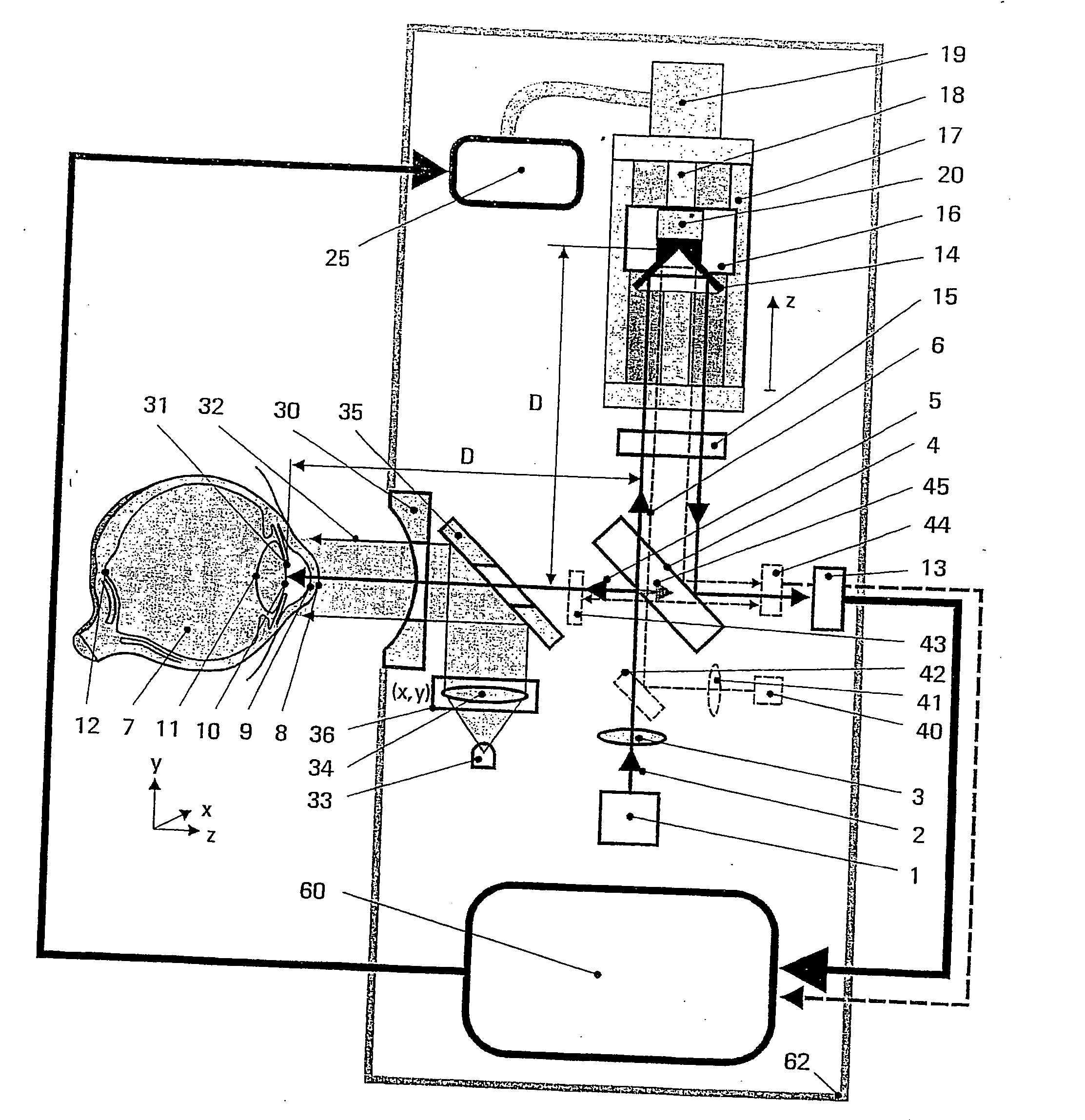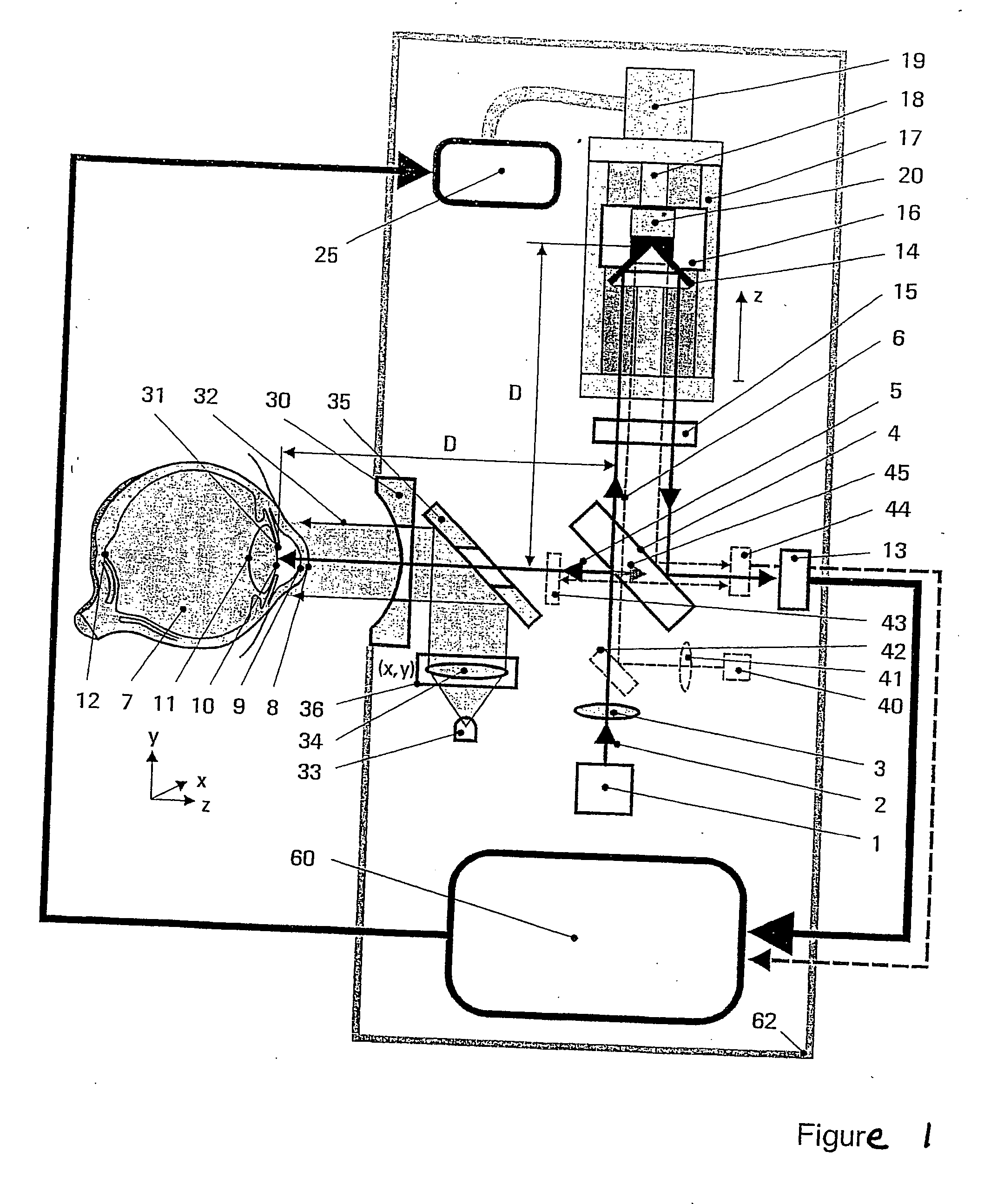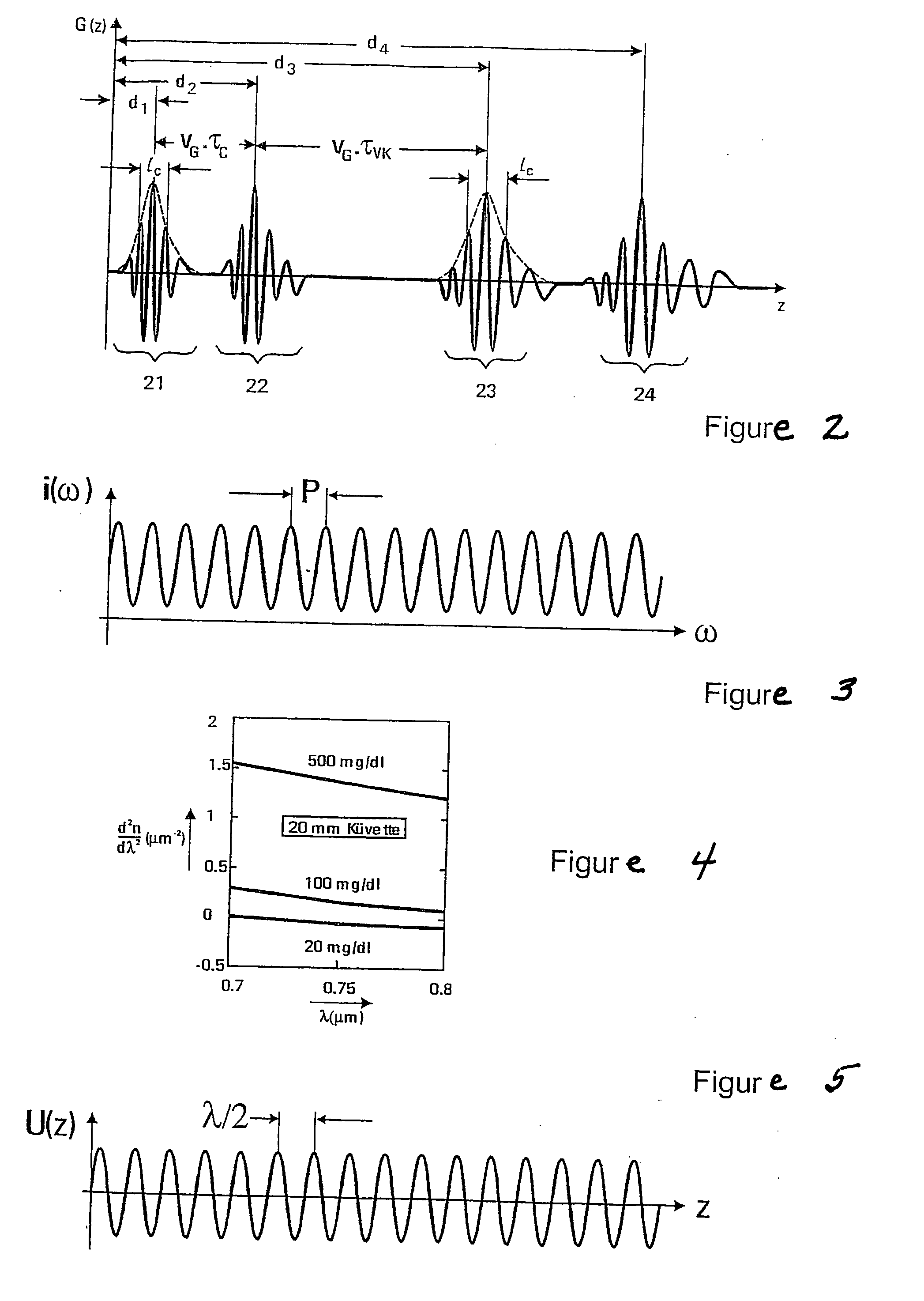Method and assembly for measuring a dispersion in transparent media
a technology of transparent media and dispersion, applied in the field of method and assembly for measuring a dispersion in transparent media, can solve the problems of invasive process, severe limitations in methods, delay or even prevent late complications, etc., and achieve the effect of reliable and accurate measurements, simple and convenient us
- Summary
- Abstract
- Description
- Claims
- Application Information
AI Technical Summary
Benefits of technology
Problems solved by technology
Method used
Image
Examples
Embodiment Construction
[0024] The arrangements and methods described in the following combine short-coherence length measurement with short-coherence dispersion measurement and are suitable for in vivo measurements of the eye. The basic physical methods are: [0025] short-coherence interferometry; and [0026] spectral interferometry.
[0027] These methods are known as time domain LCI and Fourier domain LCI (see the article by A. F. Fercher and C. K. Hitzenberger, “Optical Coherence Tomography”, Progress in Optics, Vol. 44 (2003), Chapter 4, E. Wolf (ed). In contrast to the methods and arrangements of short-coherence length measurement described in the above-cited reference, the proposed solutions make it possible to measure not only the lengths of the compartments but also their dispersions. The measurement of the dispersions and of the glucose content following therefrom in compartments such as tissues and aqueous solutions, e.g., the aqueous humor of the human eye, are substantial components of the present...
PUM
 Login to View More
Login to View More Abstract
Description
Claims
Application Information
 Login to View More
Login to View More - R&D
- Intellectual Property
- Life Sciences
- Materials
- Tech Scout
- Unparalleled Data Quality
- Higher Quality Content
- 60% Fewer Hallucinations
Browse by: Latest US Patents, China's latest patents, Technical Efficacy Thesaurus, Application Domain, Technology Topic, Popular Technical Reports.
© 2025 PatSnap. All rights reserved.Legal|Privacy policy|Modern Slavery Act Transparency Statement|Sitemap|About US| Contact US: help@patsnap.com



